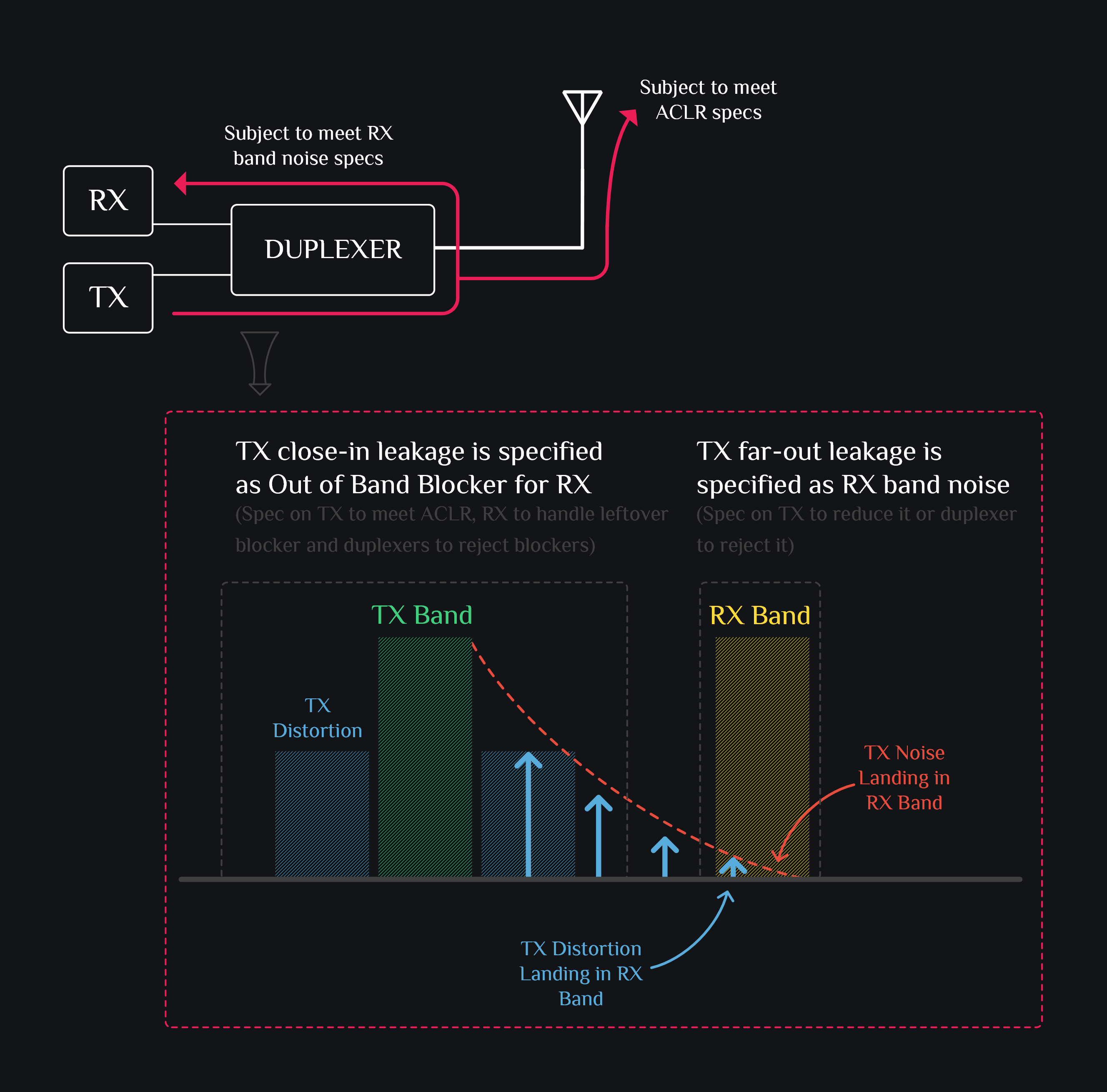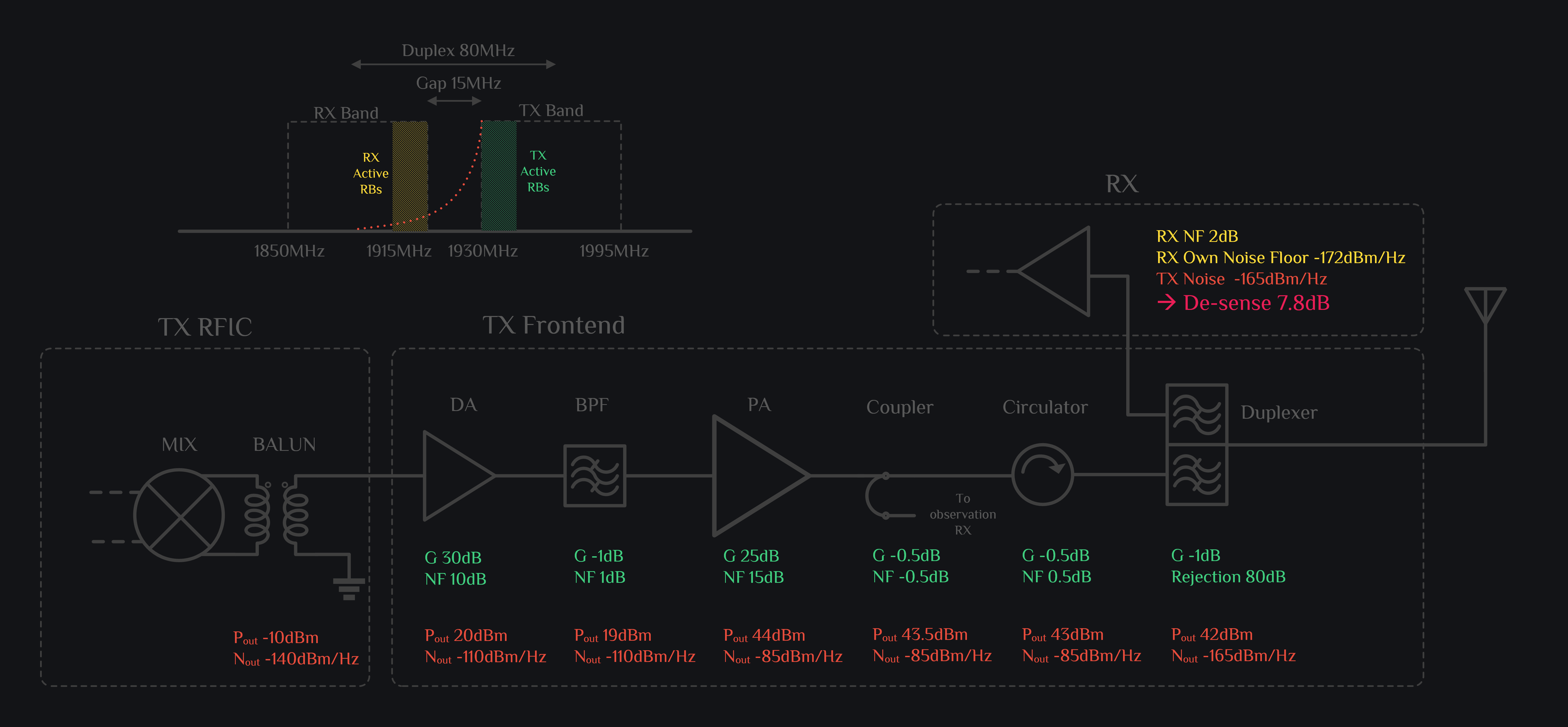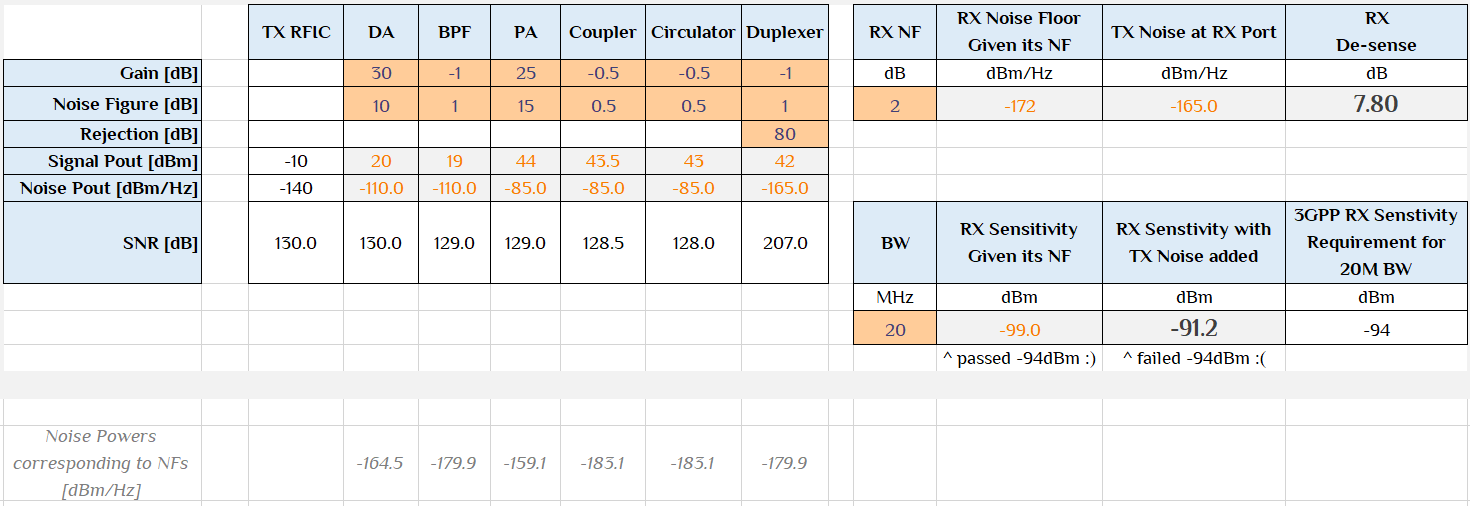TX Receive Band Noise Spec Explained
As with any circuit, a TX comes with two basic impairments: distortion and noise. Some of these fall very close to the signal band, get transmitted out of antenna, and cause emissions in adjacent channels measured as ACLR. And some of these fall a little far away from signal band, get attenuated through duplexer, and make it to your own RX causing degradation in sensitivity of your own RX. Such emissions from your own TX to your own RX at the RX frequency are referred to as receive band noise (we emphasized the RX frequency, because if it is not at the RX frequency then we refer to them as out of band blockers in RX lingo, and make it more of an RX team issue to deal with).

Note that while receive band noise is primarily a concern for your own RX, it also gets transmitted out of antenna (just like any regular emission), and that is also an issue but chances are you have already taken care of it while meeting ACLR specs over adjacent bands, now is the time to take care of your own RX which will be the biggest victim to this received noise as other folks will get a much smaller copy of this noise because of path loss from your antenna to someone else’s antenna. Also note that receive band noise is only an issue in FDD scenarios, in TDD RX is OFF when TX in transmitting, so we don’t care about noise reaching RX.
Numerical Example
Let’s take a real life example. Say we are operating in FDD band N25. We have our 20MHz TX signal parked at left edge of TX frequency band, and we have RX operating at the right edge of RX frequency band. This is the worst case scenario as RX is only 15MHz away from TX. Say our TX chip is giving out -10dBm output power and -140dBm/Hz noise at 15MHz offset. Let’s see what happens when this noise makes it to RX. We have traced noise numbers along TX chain in the image below.

We are attaching the spreadsheet for above calculations. Play with different parameters of system to understand how you can budget noise between various blocks of TX. Also you can see in the image below how RX was passing 3GPP sensitivity requirement but now your TX noise made it fail.

References
[1] LTE UE Receiver Performance MeasurementsRFInsights
Date Published: 19 Jan 2023
Last Edit: 02 Feb 2023